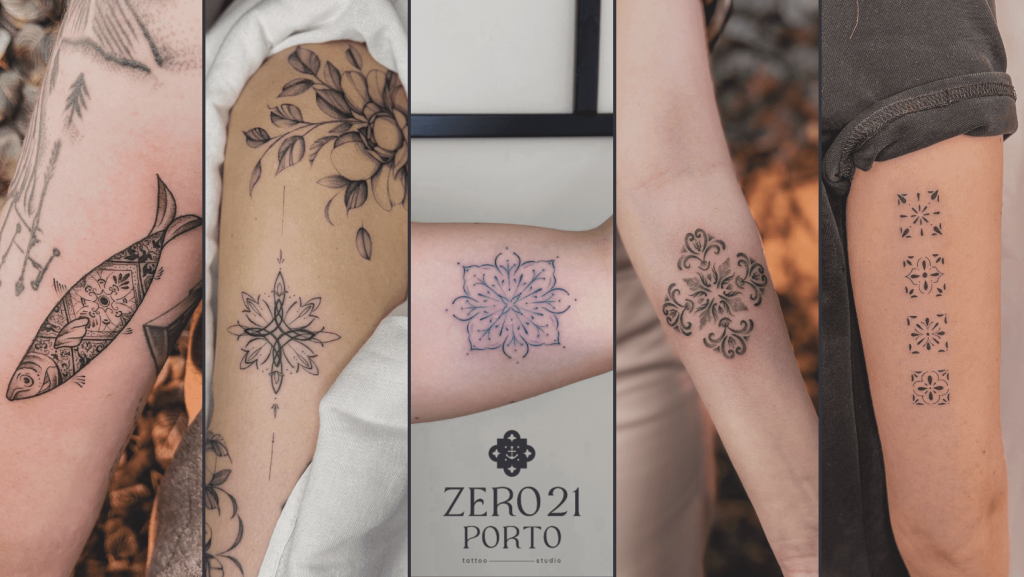Portuguese tile tattoos have won over more and more body art lovers who want to carry with them a strong symbol of Portuguese culture. With their intricate patterns, vibrant colors and historical value, tiles are a true work of art – and now also a charming inspiration for tattoos.
Portuguese Tiles in Tattoo
More than decorative elements, tiles tell stories. They appeared in Portugal in the 15th century and became part of the country’s architectural identity. Present in churches, houses, train stations and monuments, tiles depict religious themes, landscapes, scenes from everyday life and geometric patterns that have become icons of the Portuguese aesthetic.
When choosing a tattoo inspired by azulejos, many people seek to pay homage to their roots, celebrate their cultural heritage or simply eternalize an image that refers to the beauty and tradition of Portugal.
The History of Portuguese Tiles
The history of Portuguese tiles dates back to the 15th century, when they were introduced to Portugal by the Moors. The word “azulejo” itself comes from the Arabic al-zulayj, which means “small polished stone”. At first, azulejos were used mainly as decorative and functional elements on walls and floors, helping to keep rooms cool in hot climates.
Over time, the Portuguese developed their own style, influenced by different cultures. During the 16th century, azulejos were widely used to decorate palaces and churches. It was also at this time that tiles began to be produced in Portugal, especially in Lisbon and Coimbra.
In the 17th and 18th centuries, tiles became real storytelling canvases: they depicted religious, mythological and rural scenes and even historical events. These tile panels can still be seen today in churches, train stations, house façades and public buildings. In Porto, some of the most famous are in São Bento station, in the Porto Cathedral (Sé do Porto) and in churches such as Capela das Almas and Igreja do Carmo.
Over the centuries, blue and white tiles have become one of Portugal’s greatest visual symbols, associated with the country’s national identity, urban architecture and artistic expression.
Style and Techniques in Tile Tattoos
Tile tattoos are usually done with fine lines and great attention to detail, requiring a tattoo artist with experience in delicate work. The most common colors are done with blue ink, in reference to traditional tiles, but you can also opt for black and gray versions or incorporate other colors for a more modern touch.
Some popular ideas include:
- Tattoos with floral or geometric patterns typical of 18th century tiles;
- Combining tiles with natural elements such as flowers or animals;
- Personalized designs that combine the style of the tiles with personal symbols.
Here’s an inspiration gallery of tattoos done by our tattoo artists:

Would you like to get a tattoo inspired by tiles?
Choosing a tattoo inspired by Portuguese tiles is a way of carrying a piece of the country on your skin, wherever you are in the world.
At our studio in Porto, we specialize in fine line tattoos and custom designs. If you want to turn a tile pattern into an exclusive design for your skin, get in touch and make an appointment.


